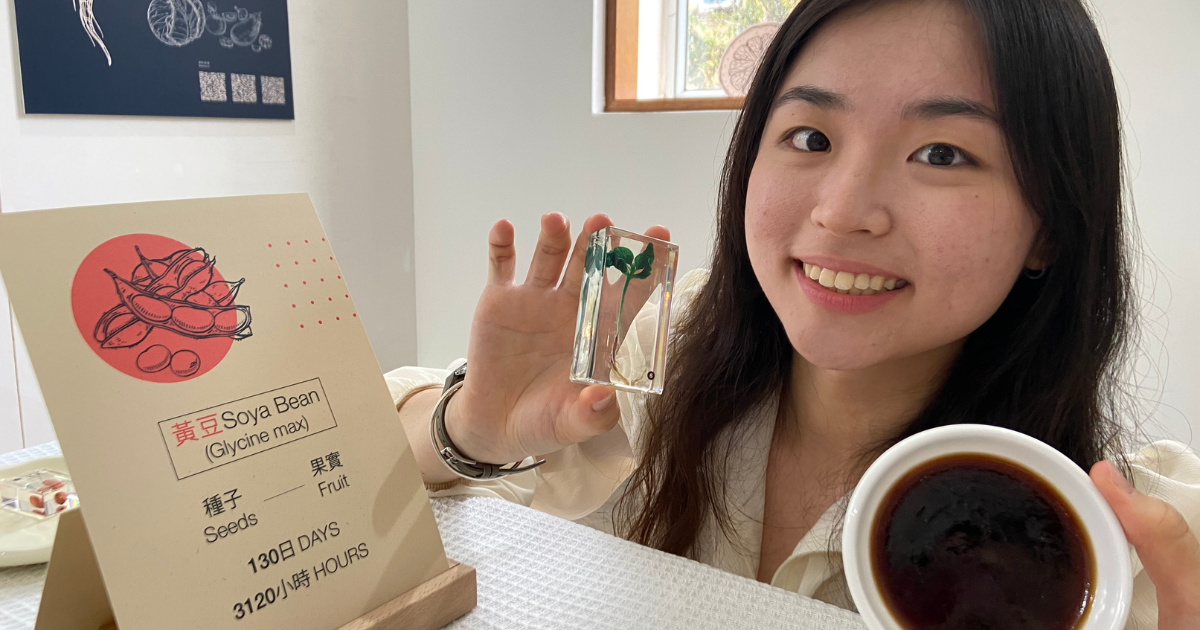In the everyday life of Hong Kong people, soy sauce is used to season dishes. Bread and pasta are also much loved. But why is so little known about the time and effort that goes into growing and producing these items? The journey of food from production to dining table is more challenging than one may think. Hong Kong is famous for being a food paradise, and, as a result, has a substantial data set highlighting the amount of food waste generated every day and its burden on the environment. Feeding Hong Kong has partnered with Tzu Chi Education and Action Centre this July to launch a three-month exhibition titled “Grateful Sharing, Cherish Food”, which features interactive exhibits and a series of workshops aimed at encouraging the public to reflect on their relationship with food and to make more sustainable and eco-friendly lifestyle choices when they can, starting with food waste reduction.

In one corner of the exhibition, hundreds of dried orange peels are suspended to form a beautiful canopy, inviting visitors to take photos.
In Hong Kong, more than 3,400 tonnes of food are discarded to landfills every day – this equals to the weight of 240 double-decker buses and is also enough to provide eight million meals. Despite this, one in five people in Hong Kong live below the poverty line and may not even be able to afford three meals a day.
Soy sauce, a commonly-used seasoning in Asian cuisine, may seem insignificant but it takes at least four months to grow soybeans which then undergoes fermentation and sun-drying. Wheat for bread and noodles, takes six months to grow. Consider the common peanut – even these take five months to grow from seed to mature plant. The amazing process of food production inspired artist Kathfree Fung to organise this exhibition. She observed that rice, side dishes, and soy sauce are often found in leftover in daily life and set up a “Five-Course” exhibition covering topics including food production, sustainable development, and earth-friendly consumption. Through interactive art installations, videos, and information panels, “participants can reflect on their relationship with consumption, whether they need it or want it, and appreciate the extraordinary aspects of ordinary foods.”

Soy sauce may seem insignificant, but it takes at least four months to grow soybeans alone before they are fermented and sun-dried into soy sauce.
Kathfree broke down the process of making noodles into several parts, starting with the seed, followed by sprouting, growth, and maturity period, wheat bran, and, finally, noodles and bread, presenting them to visitors in detail, allowing the public to better understand their origins.
The focal point of the exhibition is a two-meter-tall canned food installation which visitors can enter and observe. It is aimed at inspiring reflection upon hoarding versus emotional security. In another corner, hundreds of dried orange peels are hung to create a canopy, not only providing visitors with a colorful and fragrant photo opportunity but also allowing them to explore creative ways to deal with food waste. The final part of the exhibition features an interactive device that offers insight into food production data and annual food waste figures from over 60 countries on a six-meter-wide map.
In hosting this exhibition, The Tzu Chi Education and Action Centre hopes that participants can take a break from the busy pace of Hong Kong, reflect on their daily eating habits and attitudes and inspire behavioral changes. The exhibition offers guided tours and workshops and welcomes schools and groups to make reservations for visits.
Opening Hours: Monday, Wednesday to Sunday (10:00-12:30/*/13:30-17:00)
*Temporarily closed at lunch hour
(Closed on Tuesdays & Public Holidays)
Click here to learn more.

Follow our social media channels!
